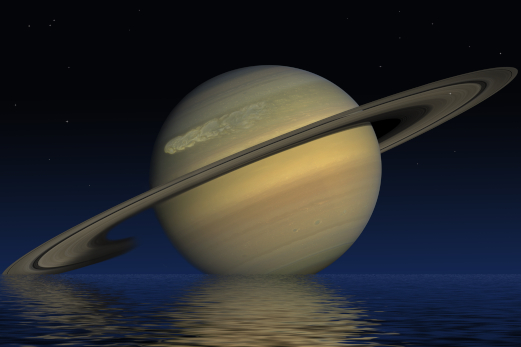- Series:Astronomy, Transcript English
Psalm 8:3-4
“When I consider thy heavens, the work of thy fingers, the moon and the stars, which thou hast ordained; what is man, that thou art mindful of him? and the son of man, that thou visitest him?”
 When I was in primary school, my teacher came out with a weird scientific fact about Saturn. He told us that if you could get a big enough tank of water, then Saturn would float in it!
When I was in primary school, my teacher came out with a weird scientific fact about Saturn. He told us that if you could get a big enough tank of water, then Saturn would float in it!
In a sense, this is a non-fact. After all, if there was a tank of water big enough to contain Saturn, it would be too big to accommodate on the Earth, and, in any case, the tank would be large enough to have its own gravitational field. But what the teacher was getting at is that Saturn is the only planet in the Solar System whose density is less than that of water.
Today, we have a lot of unusual facts about Saturn, many of which were discovered by the Cassini spacecraft, which, in my opinion, must be one of the most successful space missions of all time.
Astronomers have discussed ideas about the formation of Saturn’s beautiful rings for decades. I was taught as a child that Saturn’s gravitational pull had smashed one of its moons to pieces, and the rings were the debris from that event millions of years ago. Cassini has shown that the rings must have formed far too recently to be explained as a destroyed moon. The gravitational pull of the rings is much too small to have had them last for millions of years. In short, Saturn’s apparent age is consistent with a biblical timescale, not the imagined millions of deep-time years.
Prayer: Thank You for making these wonderful planets, Lord, that remind us of Your greatness, and also the greatness of Your love for us. Amen.
Author: Paul Taylor
Ref: Littleton, J. (2018), Saturn—Jewel in the Creator’s Showcase, < https://answersingenesis.org/astronomy/solar-system/saturn-jewel-creators-showcase/ >, accessed 3/30/2019. Image: Adobe Stock Images, licensed to author.
© 2020 Creation Moments All rights reserved.
